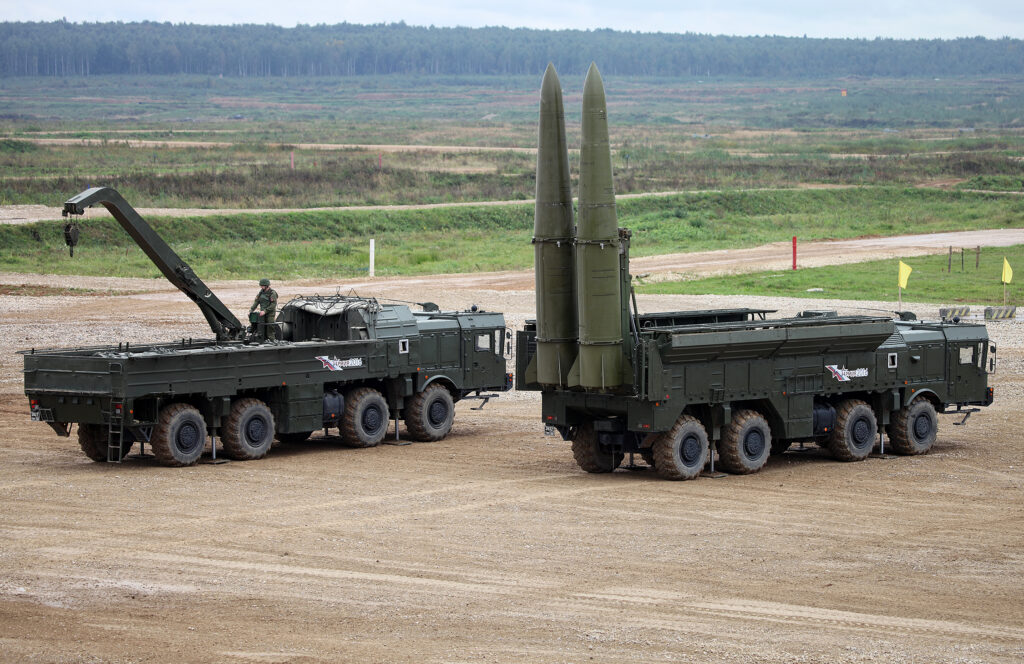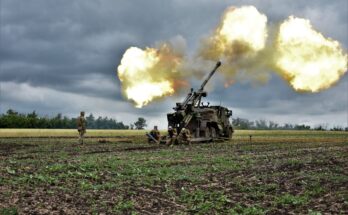A snapshot of recent news from sources around the world on the ongoing Russia-Ukraine war.

Political Developments
The European Union disbursed EUR4.5 billion to Kyiv this week, to help backstop the country’s state budget. Through 2027, Ukraine may receive up to EUR50 billion under the program, referred to as the Ukraine Facility.
Ukraine continues to bolster its domestic production capabilities to help sustain the war effort. Ukraine’s prime minister said domestic weapons production tripled in 2023 and could increase sixfold in 2024. Ukrainian companies are working to produce items like drones, artillery shells, and unmanned maritime vessels.
Kremlin spokesman Dmitry Peskov referred to the ongoing conflict as a ‘war’ on Friday, dropping the ‘special military operation’ term that Moscow had used since launching the invasion in February 2022.
Military Assistance to Ukraine
The European Union wants to use interest earned on frozen Russian assets to help buy weapons for Ukraine. The bloc is holding around 200 billion euros ($218 billion) in assets from the Russian central bank, which could generate around 3 billion euros per year in interest. EU leaders could formally endorse the plan at a summit this week.
The U.S. Inspector General launched a website to inform American citizens about oversight of U.S. weapons being provided to Ukraine. The transparency push comes at a time when a massive supplemental spending request that includes billions of dollars for Ukraine remains stalled in Congress.
Poland and Germany announced an armored vehicles coalition for Ukraine, which will officially launch next week. Polish Defense Minister Wladyslaw Kosiniak-Kamysz told media that several other countries, including the U.K., Italy, and Sweden have already joined the initiative.
Czechia has been scouring global inventories for spare artillery ammunition that could be provided to Ukraine, announcing last month that up to 800,000 shells outside of the E.U. had been identified for procurement. The Wall Street Journal reported this week that another 700,000 have been found, which could be purchased for Ukraine if funding emerges.
Finland pledged EUR30 million towards the Czech-led initiative, the country’s defense minister said on Tuesday. Slovenia will contribute funds, as well.
Berlin will deliver another EUR500 million in military aid to Ukraine, German Defense Minister Boris Pistorius said this week. The package will include 10,000 artillery shells drawn from the German Army’s stockpile. Pistorius noted that Germany is also prepared to pay for 180,000 rounds as part of the Czech-led ammunition initiative.
Estonia announced a delivery of 155mm artillery shells and other aid worth EUR20 million on Thursday.
Spain will transfer 19 Leopard 2A4 main battle tanks to Ukraine this year, split between two batches. Half will be delivered in June and the other batch should arrive in September.
Ukraine has begun taking delivery of M1117 Armored Security Vehicles. Washington pledged 250 of the vehicles in November 2022, but the ASVs required refurbishment before they could be delivered.
Battlefield Updates
The Ukrainian military is using hundreds of expendable drones to attack Russia’s oil and gas industry, including a March 17 attack on the Slaviansk refinery. So far this year, Ukraine may have carried out as many as 12 attacks on Russian oil and gas plants. Russia has 31 crude oil refineries, most are in the western portion of the country. Kyiv has used the UJ-26 Beavers and Soviet-era TU-141 drones in these attacks. The overall number of drones used in the attacks is unknown. The attack on the Slaviansk refinery perhaps involved 17 drones.
On Friday, The Financial Times reported that those attacks on the Russian energy industry have drawn quiet opposition from the U.S., which has warned Kyiv against carrying out the attacks due to rising oil prices and the threat of tit-for-tat retaliation hitting Ukraine’s infrastructure.
Russian President Vladimir Putin said he plans to create a buffer zone along the border with Ukraine to help defend against missile and drone strikes launched by Ukraine, and against land incursions.
Defense Minister Sergei Shoigu emphasized on Monday that Russia must take additional steps to shore up protection of the Black Sea Fleet, as well. The fleet’s ships and submarines have been heavily targeted by Ukrainian drones and missiles throughout the conflict.
Over the weekend, a drone of unknown origin hit a decommissioned Mi-8 transport helicopter in Transnistria, a breakaway region of Moldova that borders Ukraine. Officials in the Russia-backed region blamed the attack on Ukraine,
Russia has conducted another missile attack on Odesa. Iskander-M missiles hit the southern port city on March 15. Two Iskander missiles hit a section of Odesa in succession. Ukrainian officials said the city has been attacked by Russian drones and missiles almost every day during March. Odesa is vital to Ukrainian grain exports.
Russia is making growing use of North Korean-made missiles in its war with Ukraine. Officials in Kyiv said North Korean missiles were used in in about 50 attacks. North Korean missiles used in combat include the KN-23 (Hwasong 11). North Korean missiles have attacked targets in at least six regions of Ukraine. The North Korean missiles are described as low quality with imperfect control systems. There incidences of North Korean missiles exploding in midair.
South Korea estimates that Pyongyang has delivered 7,000 containers of ammunition to Russia since the deliveries began last year, South Korean Defense Minister Shin Won-sik said on Monday.
For 50 years, Forecast International intelligence reports have been the aerospace and defense industry standard for accurate research, analysis, and projections. Our experienced analysts compile, evaluate, and present accurate data for decision makers. FI's market research reports offer concise analysis of individual programs and identify market opportunities. Each report includes a program overview, detailed statistics, recent developments and a competitive analysis, culminating in production forecasts spanning 10 or 15 years. Let our market intelligence reports be a key part of reducing uncertainties and mastering your specific market and its growth potential. Find out more at www.forecastinternational.com



